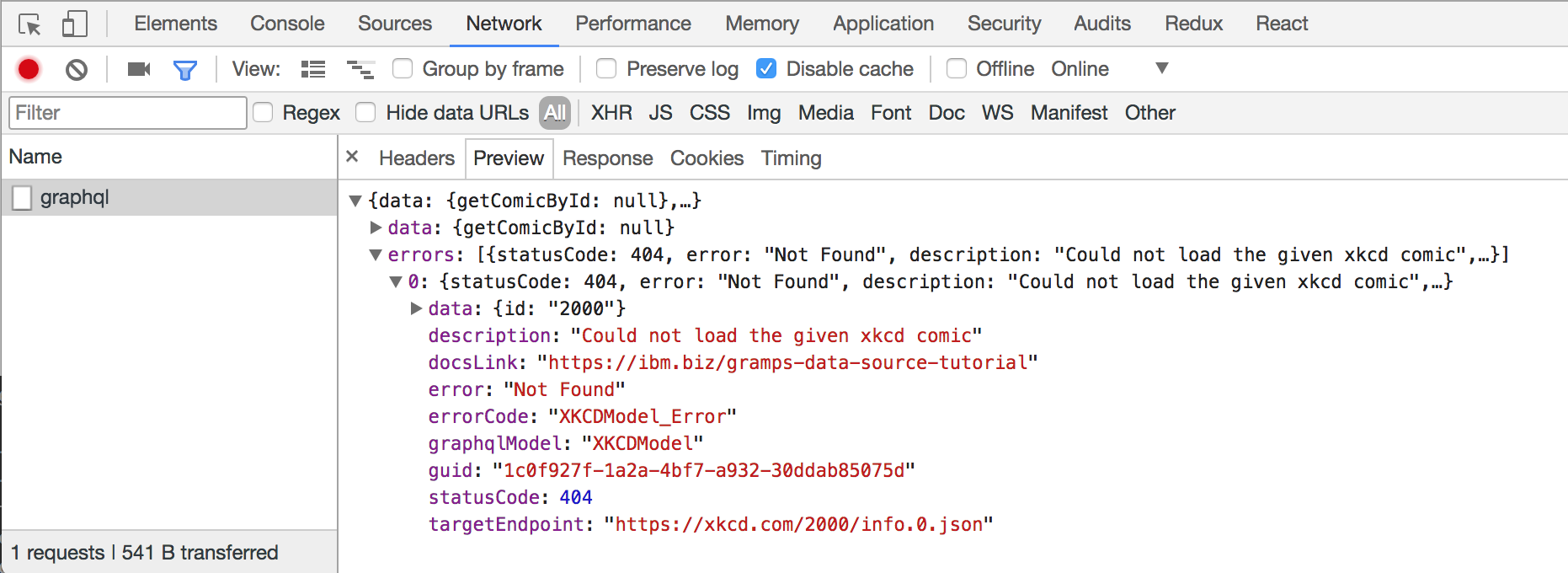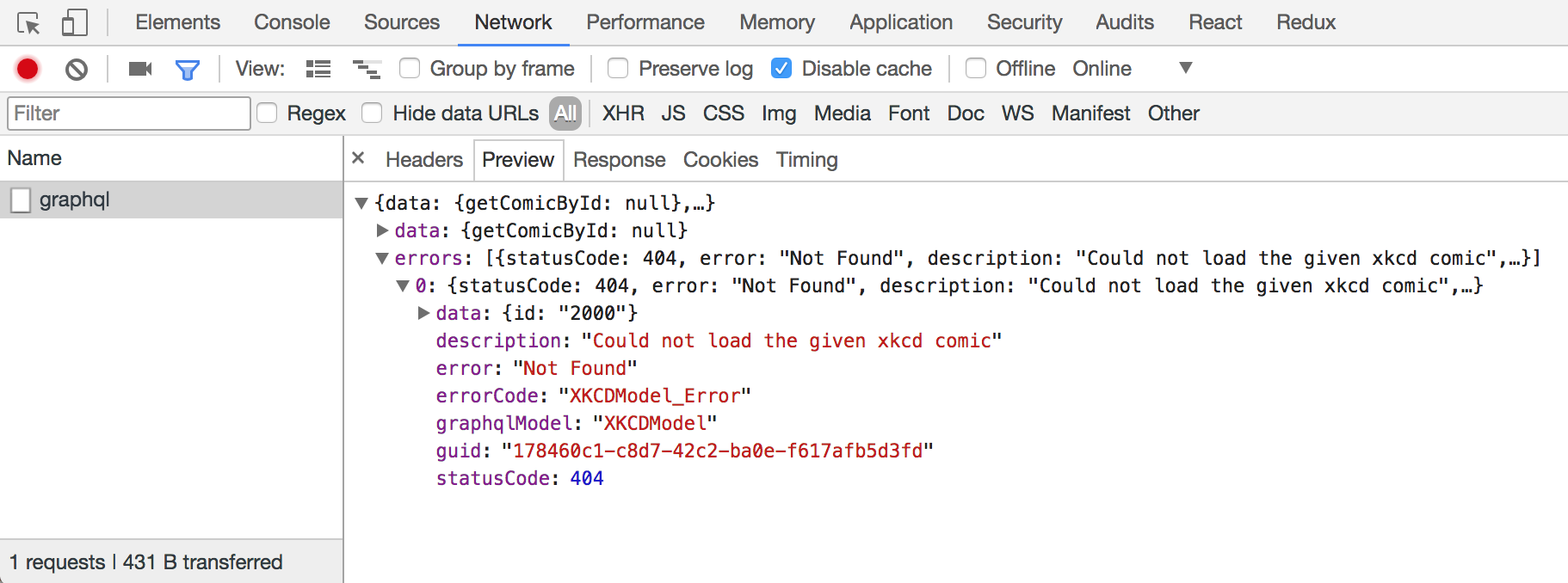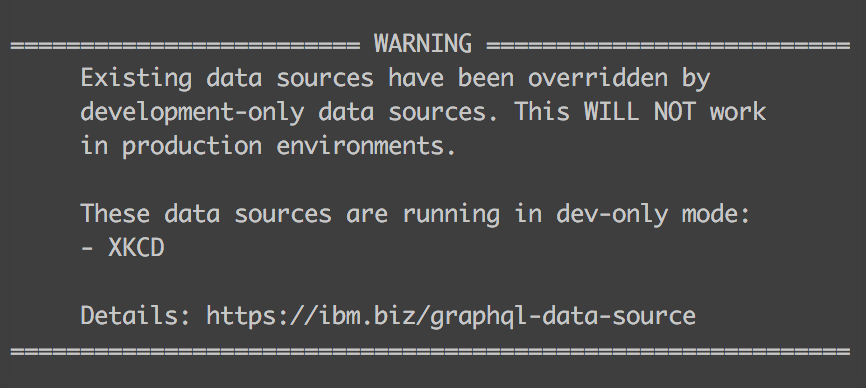GraphQL @ Massive Scale
GraphQL as the Glue in a
µ-Service Architecture
by Jason Lengstorf
@jlengstorf · jason.lengstorf@ibm.com
Slides: git.io/vFvei
Who I Am
- Building web things since 2003
- Senior developer / front-end architect for IBM Cloud
- Former workaholic / current work-life balance advocate
- Obsessed with processes & efficiency
- Old man at heart
GraphQL is one of the most exciting things I’ve worked on in a long time
I wanted to start using it in production immediately

Not everyone was on board
Before we get into the details,
let me set the scene…
How IBM Cloud is built:
- Node µ-service architecture
- 30+ µ-service teams
- Each µ-service (“plugin”) is a separate codebase
- Teams control their own workflow
This has its downsides:
- Things can change in 30+ directions at any given time
- Front-ends need data from multiple µ-services
- Internal documentation & architecture is inconsistent
- Code can be wildly inconsistent between µ-services
GraphQL has solutions:
- Changes are centralized in the GraphQL µ-service
- Data access happens through a single endpoint
- Documentation is centralized and consistent
- Cleaner separation between data and presentation
But there are complications:
- Who “owns” the GraphQL µ-service?
- How can teams make independent changes?
- Can one bad commit take down the whole service?
- Doesn’t an extra layer make it harder to trace errors?
We wanted the benefits of GraphQL… but could we afford the trade-offs?
We needed answers
Can we...
- Centralize data, but let teams keep control?
- Design an approach that improves error handling?
- Make it so easy teams want to switch?
- Build a service that can handle IBM’s scale?
Challenge #1:
Centralize Data, but Decentralize Control
The ideal solution:
Each team maintains their own GraphQL schema...
but that schema is aggregated by a central µ-service.
If this was going to work, we needed a standardized format for sharing schemas.
We call these
Data Sources





Each data source is an independent GitHub repo, which means:
- ✅ No bottlenecks
Each team commits and deploys code independently. - ✅ No loss of control
Each team owns their data source. - ✅ No accidental borking
Each team’s code has individual test suites.
How do we combine the data sources?




Implementation is easy enough to fit the code on a slide
Let’s Upgrade this GraphQL Server
import Express from 'express';
import bodyParser from 'body-parser';
import { graphqlExpress } from 'apollo-server-express';
import mySchema from './schema';
import myDataAccess from './data';
const app = new Express();
app.use(bodyParser.json());
app.use('/graphql',
graphqlExpress({
schema: mySchema,
context: myDataAccess,
}),
);
Step 1: Import the Middleware
import Express from 'express';
import bodyParser from 'body-parser';
import { graphqlExpress } from 'apollo-server-express';
+ import { grampsExpress } from '@gramps/gramps-express';
import mySchema from './schema';
import myDataAccess from './data';
const app = new Express();
app.use(bodyParser.json());
app.use('/graphql',
graphqlExpress({
schema: mySchema,
context: myDataAccess,
}),
);
Step 2: Import the Data Sources
import Express from 'express';
import bodyParser from 'body-parser';
import { graphqlExpress } from 'apollo-server-express';
import { grampsExpress } from '@gramps/gramps-express';
- import mySchema from './schema';
- import myDataAccess from './data';
+ import schemaOne from '@gramps/data-source-one';
+ import schemaTwo from '@gramps/data-source-two';
const app = new Express();
app.use(bodyParser.json());
app.use('/graphql',
graphqlExpress({
schema: mySchema,
context: myDataAccess,
}),
);
Step 3: Combine the Data Sources
import Express from 'express';
import bodyParser from 'body-parser';
import { graphqlExpress } from 'apollo-server-express';
import { grampsExpress } from '@gramps/gramps-express';
import schemaOne from '@gramps/data-source-one';
import schemaTwo from '@gramps/data-source-two';
const app = new Express();
app.use(bodyParser.json());
+ app.use(grampsExpress({ dataSources: [ schemaOne, schemaTwo ] }));
app.use('/graphql',
graphqlExpress({
schema: mySchema,
context: myDataAccess,
}),
);
Step 4: Use the New Schema and Context
import Express from 'express';
import bodyParser from 'body-parser';
import { graphqlExpress } from 'apollo-server-express';
import { grampsExpress } from '@gramps/gramps-express';
import schemaOne from '@gramps/data-source-one';
import schemaTwo from '@gramps/data-source-two';
const app = new Express();
app.use(bodyParser.json());
app.use(grampsExpress({ dataSources: [ schemaOne, schemaTwo ] }));
app.use('/graphql',
+ graphqlExpress(req => ({
+ schema: req.gramps.schema,
+ context: req.gramps.context,
+ })),
);
Challenge #2:
Improve Error Handling
What Makes an Error Helpful?
- Clear description of what went wrong
- Clarity about where the error occurred
- GraphQL errors vs. underlying data access issues
- Information to help with tracing bugs
- Unique IDs shared on the client and server side
Client-Side Errors in Development

In production, we can’t show some data
- Docs link may be behind our firewall
- Target endpoint may not be public
Client-Side Errors in Production

docsLink and targetEndpoint are removed in production.
Client and server errors share a GUID
Error: Could not load the given xkcd comic
(178460c1-c8d7-42c2-ba0e-f617afb5d3fd)
Description: Could not load the given xkcd comic
Error Code: XKCDModel_Error
GraphQL Model: XKCDModel
Target Endpoint: https://xkcd.com/2000/info.0.json
Documentation: https://ibm.biz/gramps-data-source-tutorial
Data: {
"id": "2000"
}Using the GUID, we can find the docsLink and
targetEndpoint in the server logs.
This Means...
- Errors are normalized across all data sources
- Support tickets can directly reference details in logs
- Errors are clear and come with documentation
- The source of a given error is immediately clear
Implementation Is Optional and Easy
import Express from 'express';
import bodyParser from 'body-parser';
import { graphqlExpress } from 'apollo-server-express';
import { grampsExpress } from '@gramps/gramps-express';
import schemaOne from '@gramps/data-source-one';
import schemaTwo from '@gramps/data-source-two';
const app = new Express();
app.use(bodyParser.json());
app.use(grampsExpress({ dataSources: [ schemaOne, schemaTwo ] }));
app.use('/graphql',
graphqlExpress(req => ({
schema: req.gramps.schema,
context: req.gramps.context,
+ formatError: req.gramps.formatError,
})),
);
Challenge #3:
Make Development So Easy Teams Want to Use It
If we wanted teams to start using GraphQL, we needed it to be dead simple to get started
We created a data source starter kit:
- Strong starting point for new data sources
- Step-by-step tutorial for building a new data source
- Test coverage starts at 💯
- Pre-configured for Travis CI and Code Climate
We built a CLI to make development easier
$ gramps --live
============================================================
GrAMPS is running in live mode on port 8080
GraphiQL: http://localhost:8080/graphiql
============================================================
But there was a snag:
“How do we run a local instance of the GraphQL
µ-service if the data
source we’re developing is already installed? Won’t they collide?”
The solution?
Allow local
data sources
to override
gramps --data-source-dir ./
But add a warning

Clarified text and updated links are coming (#36)
Actually, add two warnings

Clarified text and updated links are coming (#36)
Challenge #4:
Build for
Global Scale
We didn’t have to do much
It turns out Apollo’s Express server just works.

Which is pretty great
We started working on the GraphQL µ-service in May
It hit production in July
After the dust settled,
we realized two things
#1
“Holy shit, if everyone wrote their data sources using this format, the dev community could share GraphQL data sources as easily as we share npm packages.”
#2
“This might be useful to other people.”
So we’re
releasing it under the MIT license
🎉

Introducing
GrAMPS
GraphQL Apollo Microservice Pattern Servergithub.com/gramps-graphql/gramps-express · npmjs.com/org/gramps
Thanks!

Jason Lengstorf
Follow me on Twitter: @jlengstorf · jason.lengstorf@ibm.com
github.com/gramps-graphql/gramps-express ·
npmjs.com/org/gramps